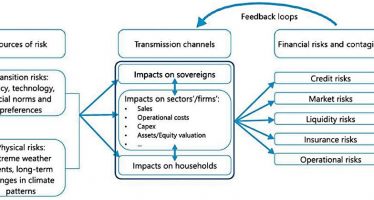African Leaders, Business Community Push for Financing of Priority Regional Infrastructure Projects
- Across Sub-Saharan Africa, poor infrastructure is a major bottleneck for sustainable development
- Signaling a new push and renewed commitment, the Dakar Financing Summit is focusing on regional infrastructure with a view to boosting investment and catalyzing greater cooperation
- By tackling Sub-Saharan Africa’s infrastructure deficit, African countries will be able to lay the foundations for sustained economic growth and productivity improvements needed to end poverty and boost shared prosperity on the continent
 It is well-known that the poor state of infrastructure in Sub-Saharan Africa cuts economic growth by up to two percentage points and stifles business productivity by as much as 40 percent, putting a brake on growth and creation of jobs and wealth.
It is well-known that the poor state of infrastructure in Sub-Saharan Africa cuts economic growth by up to two percentage points and stifles business productivity by as much as 40 percent, putting a brake on growth and creation of jobs and wealth.
Less well-known are the concerted steps that the African Union Commission, New Partnership for Africa’s Development (NEPAD) and the Programme for Infrastructure Development in Africa (PIDA) are taking to improve infrastructure and meet the huge financing needs estimated at $93 billion annually. Adopting regional approaches and mobilizing the strengths of the private sector are essential for generating shared solutions.
In the latest bid to galvanize action, H.E. President Macky Sall of Senegal and current Chairperson of the NEPAD Heads of State and Government Orientation Committee is convening a Financing Summit in Dakar from June 14-15.
The Summit’s goals are to mobilize stakeholders around ongoing efforts and accelerate implementation of priority regional infrastructure projects. The Summit responds directly to the expressed demand for a pipeline of well-packaged infrastructure projects.
The World Bank delegation led by Makhtar Diop, Vice President for the Africa Region, will join African Heads of State, leaders from the AUC, African Development Bank, NEPAD, and others including potential financiers of infrastructure projects in Africa, government agencies, business leaders, development finance institutions, private equity investors, commercial banks, pension funds, bond market operators, and insurance companies. Their collective goal is to build a new consensus on the way forward.
As delegates gather in Dakar, showcasing the benefits of regional cooperation and public-private partnership for sustainable development of infrastructure in Sub-Saharan Africa is important, both to demonstrate successes and draw lessons that can benefit and guide the next generation of poverty-fighting infrastructure projects.
Taking a Regional Approach to Develop Shared Energy Solutions
Western Africa is in the grip of a chronic and sustained energy crisis that leaves only one in five Mauritanian citizens with access to electricity. In Mali, only one in three people has energy access. Senegal, host of the Dakar Financing Summit, fares slightly better, but only half of the population has power.
Against this backdrop, as this video shows, new gas finds in Mauritania are a potential game changer.
The recently-approved 300 megawatt Banda Gas to Power Project will enable production and harnessing of natural gas for generating electricity. It will provide affordable, reliable, sustainable power to Mauritania’s grid for homes, businesses and mines and for export to Mali and Senegal. Overall, 1.4 million households or 7 million people stand to benefit in the three countries.
The Banda gas-to-power project presents a new approach to developing energy resources on a regional basis. Combining power demands from multiple countries provides the scale at which gas field development becomes commercially viable at an acceptable cost for power consumers. The project’s first-of-its-kind combination of guarantees is helping to mobilize $950 million of private investment in gas extraction and energy generation by facilitating power trade among Mauritania, Senegal, and Mali.
Public-Private Partnerships for Roads
Capital cities are very special places and Dakar with its vantage location on the shores of the Atlantic, distinctive architecture and vibrant tapestry of people, culture and music is no exception.
Yet, this densely-populated capital city is prone to gridlock, suffers from traffic congestion that slows economic activity, trade and the movement of people and goods, exacerbates pollution and lowers the quality of life of residents. It also increases the cost of doing business.
The Dakar-Diamniadio Toll Highway project marks a major effort to improve transport in the crowded Dakar metropolitan area and restore the city’s luster as a driver of Senegal’s development.
Developed as a public-private partnership, the project is delivering dividends to the more than 100,000 cars and trucks that enter and exit Dakar. Transit times have been cut significantly, 20 minutes or so, down from a high of two to four hours previously. Most importantly, the resettlement of people, frequently the bane of infrastructure projects, was handled sensitively, and over 30,000 people living in a low-income, flood-prone area were successfully relocated.
As Africa’s urbanization takes root at an unprecedented pace with over 450 million new urban dwellers expected between 2010 and 2040, developing innovative solutions in the energy and transport sectors is a key priority. Mauritania’s Banda gas-to-power project and Senegal’s Dakar-Diamniadio Toll Highway project are good examples of the benefits of regional cooperation and public-private partnership geared toward improving infrastructure in Africa.
You may have an interest in also reading…
The Price of Pollution
How much does environmental activism affect a corporation’s bottom line? By Valerie Ross based on the research of Ion Bogdan
Otaviano Canuto on Central Banks and Climate Change: Turning Black Swans Into Green
There are three possible motivations for the engagement by central banks with climate change: financial risks, macro-economic impacts, and mitigation/adaptation
Customer Commandments and Importance of the ‘R’ in CSR: Ignore this at your Peril
The Ethical Business Book by Sarah Duncan Reviewed by John Foot Sarah Duncan is to be congratulated on producing The



















































































